Photos: Ancient Ants & Termites Locked in Amber
Ancient ants and soldier termites frozen in battle in tree resin called amber have been discovered in Myanmar. Here's a look at the warring insects from the Cretaceous period. [Read full story on the ant and termite warfare trapped in amber]
Ant Battle
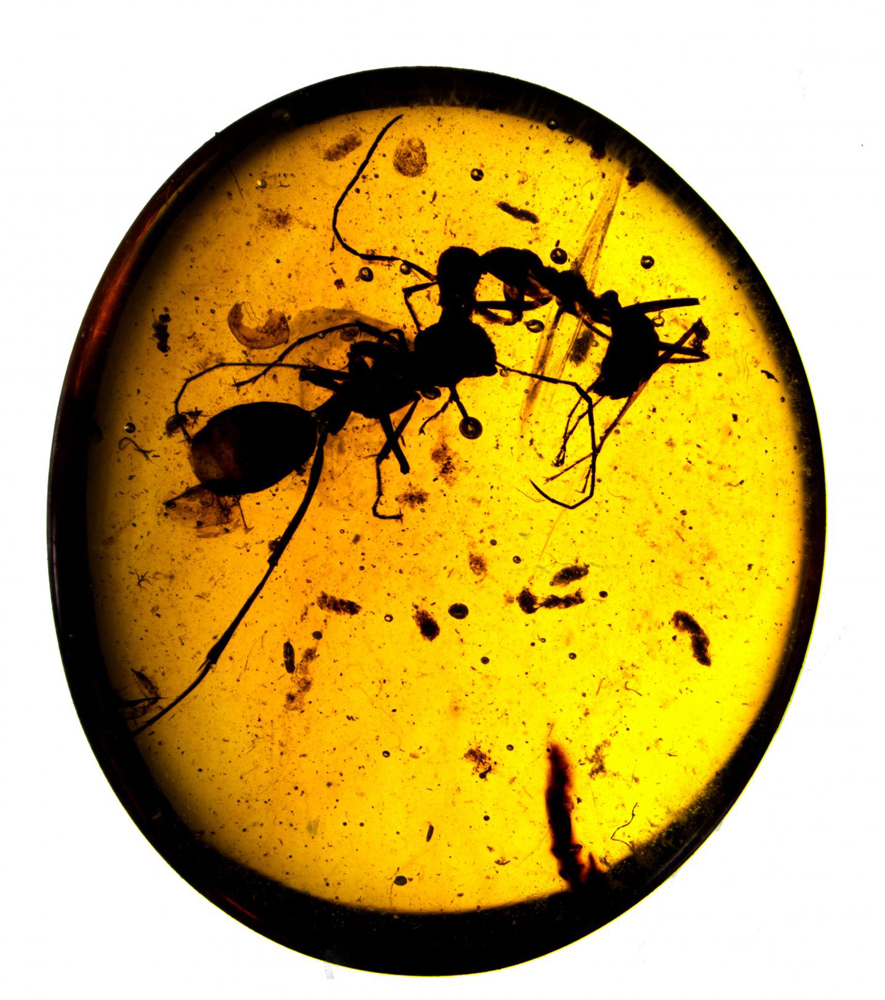
Two 99-million-year-old ant species frozen in eternal battle. These ants are two different species (Gerontoformica tendir and Gerontoformica spiralis), and their fossilized stalemate provides new evidence that early ant lineages had complex social behavior, including ant warfare. This specimen comes from Myanmar and dates to the beginning of the late Cretaceous period, when dinosaurs were the dominant vertebrate lifeform on Earth. (Credit: Copyright AMNH/D. Grimaldi and P. Barden)
Ant Conflict
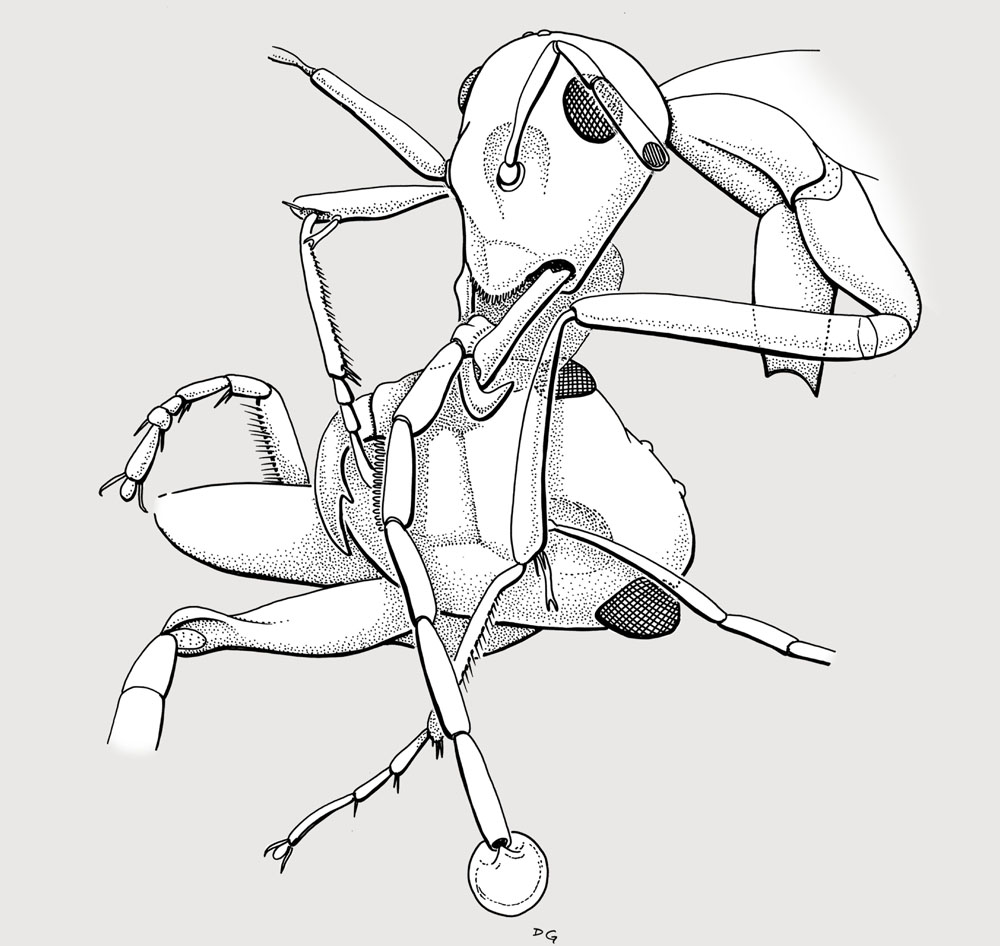
A reconstruction of the battle of two Cretaceous ant species found in Myanmar. "This instance of interspecific conflict is one of multiple lines of evidence we used to infer advanced sociality in the earliest ants," said study researcher Philip Barden, a postdoctoral scientist at the American Museum of Natural History. (Credit: Copyright AMNH/D. Grimaldi)
Warrior termite
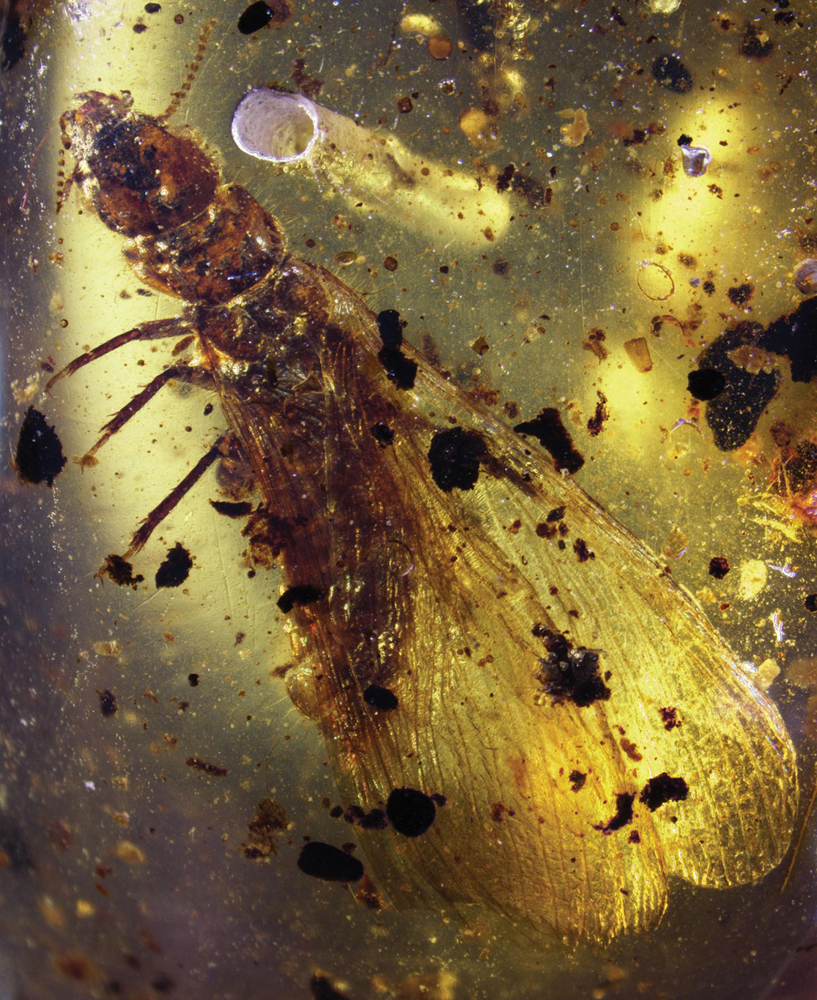
A new species of Cretaceous termite reported on February 11 online in the journal Current Biology. Krishnatermes yoddha was named after a prominent termite researcher and the Hindu word for "warrior." This winged specimen is part of the termite colony's reproductive caste. Other K. yoddha specimens were found representing soft, wingless worker termites (the kind renowned for undermining house foundations today) and hard-headed, strong-jawed soldier termites (responsible for defense). These 100 million-year-old fossils are the oldest evidence for specialized castes of termites. (Credit: Copyright AMNH/D. Grimaldi and P. Barden)
Sign up for the Live Science daily newsletter now
Get the world’s most fascinating discoveries delivered straight to your inbox.
New termites
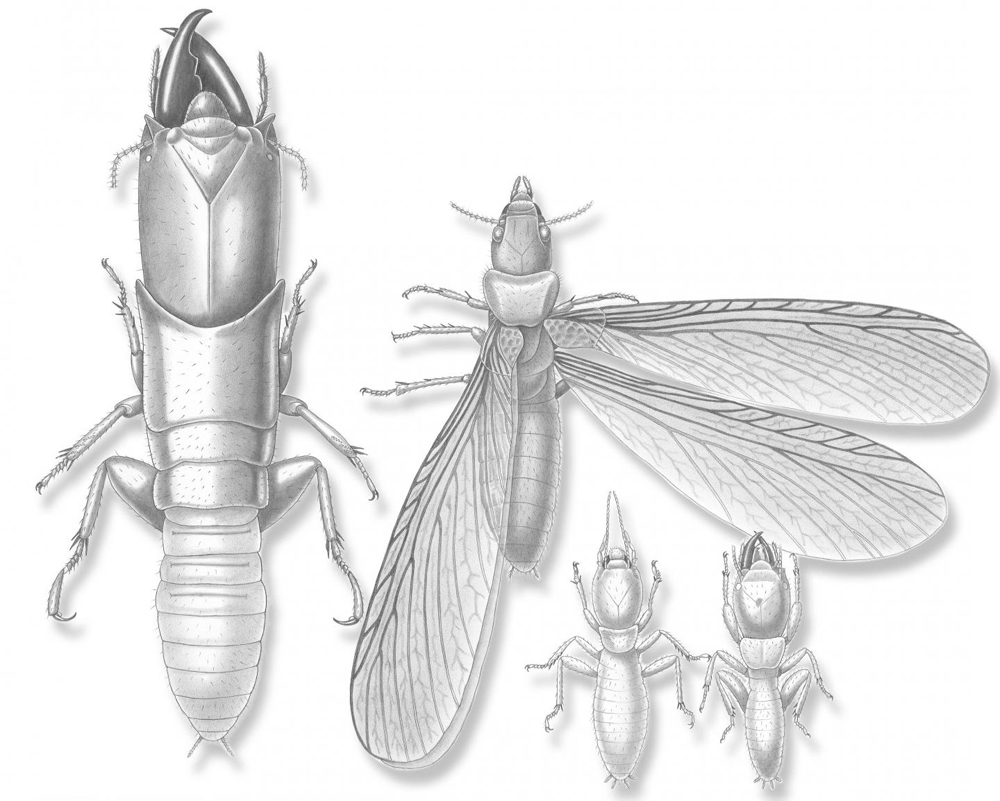
Illustrations of two new Cretaceous termite species discovered by researchers at the American Museum of Natural History. On the far left is Gigantotermes rex, which is almost an inch long (2 centimeters) and has the strong jaws and thick head of the soldier caste. The three termites to the right are the three castes of the species Krishnatermes yoddha. The winged individual is the only one capable of reproduction, while the small individual next to its abdomen is a worker. The rightmost termite is a K. yoddha soldier. (Credit: Copyright AMNH/D. Grimaldi)
Camel-headed ant
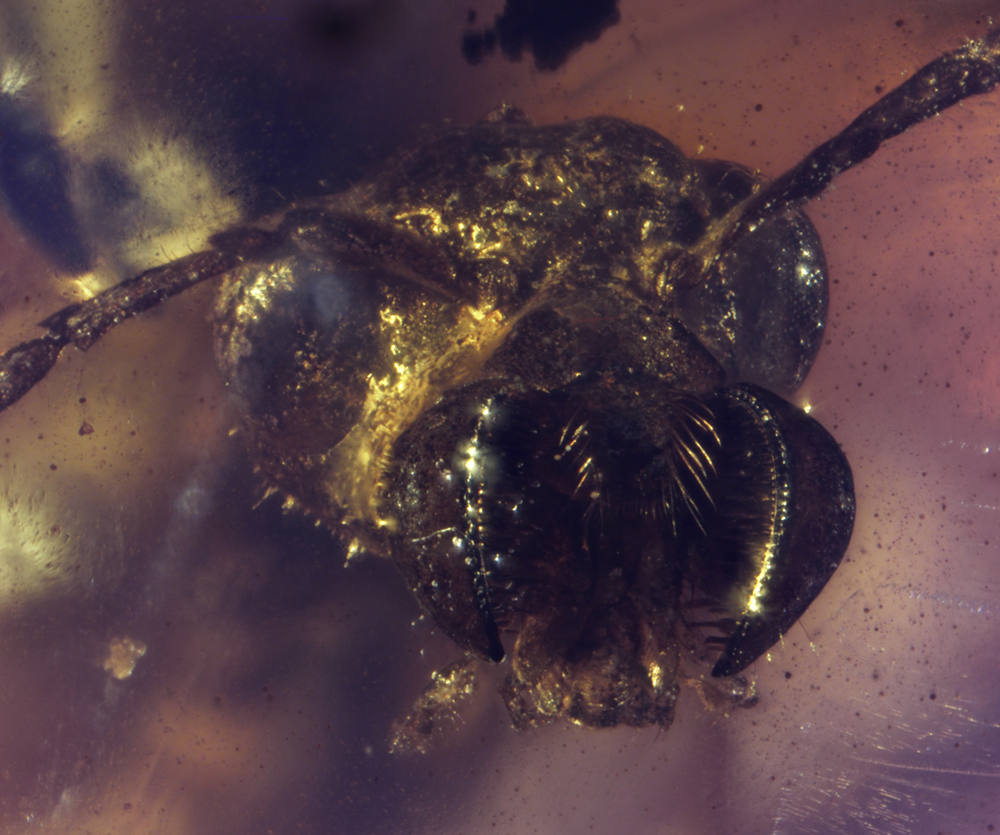
A frontal view of a new species described in the journal Current Biology on February 11. This ant was dubbed Camelomecia janovitzi, in part because of it's camel-like head. "The mouthparts of this ant are very dramatic with sharp hairs and projections," said study researcher Philip Barden of the American Museum of Natural History. Nothing like this is seen in modern ants, suggesting some sort of specialized feeding mechanism or prey in this 99 million-year-old specimen. (Credit: Copyright AMNH/D. Grimaldi and P. Barden)
Camel queen
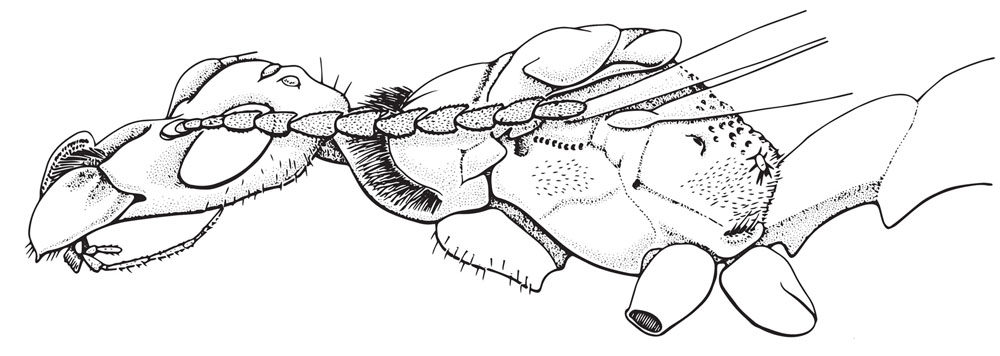
An illustration of a Camelomecia janovitzi queen with wings. This previously unknown species was discovered in 99 million-year-old Burmese amber. Ants likely evolved about 50 million years earlier than that, but these are among the oldest ant fossils ever found. The only ones older are 100 million-year-old specimens from France. (Credit: Copyright AMNH/D. Grimaldi)
Cretaceous caste
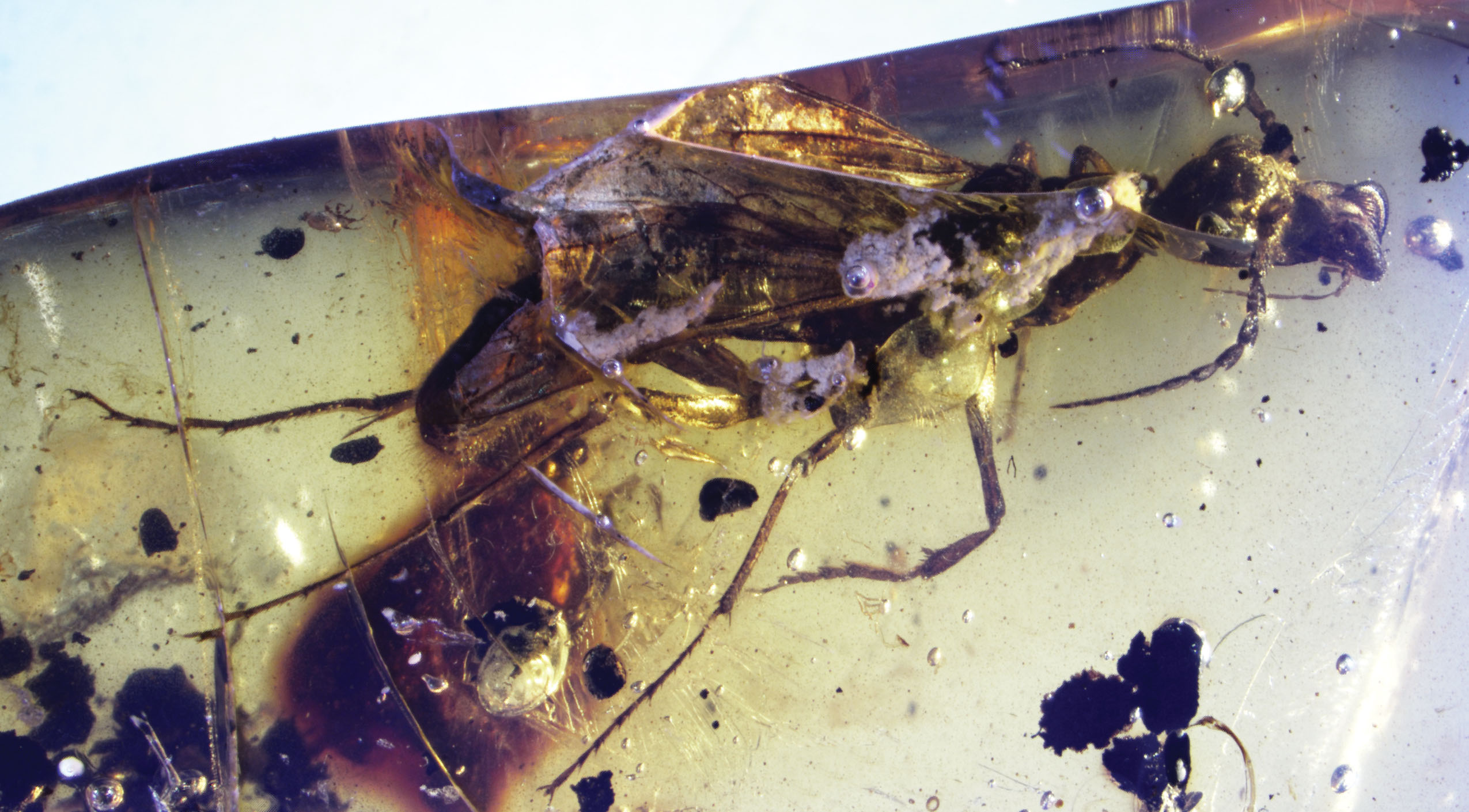
A fossilized Camelomecia janovitzi queen with wings from 99-million-year-old Burmese amber. This and other specimens reveal the distinct caste system of Cretaceous ants. These ants were "social, they're really diverse and they were the first branches of the tree," said study researcher Philip Barden, a postdoctoral scientist at the American Museum of Natural History. The species are all extinct now, Barden said, and they feature body adaptations not seen in modern ants. (Photo Credit: © AMNH/D. Grimaldi and P. Barden)
Strong jaws
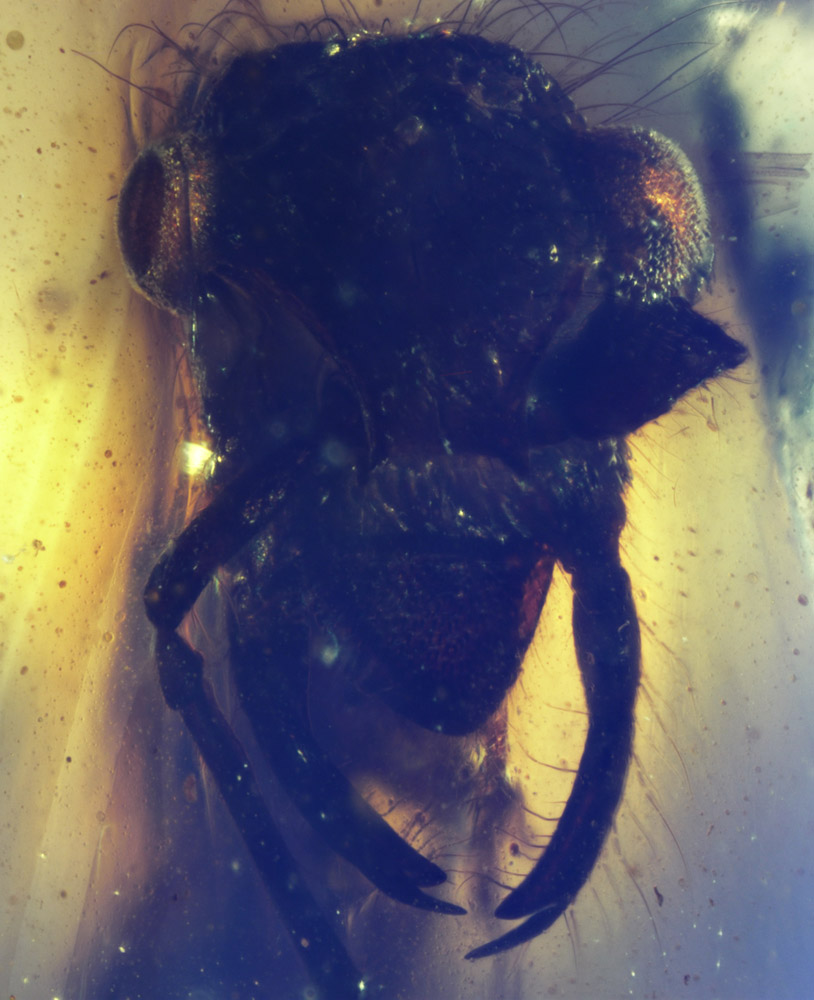
Another newly described species of Cretaceous ant from Myanmar, Gerontoformica mauradarus. This ant had fierce mandibles. Assemblages of ants found in the amber from Myanmar strongly suggest that ants of this period were already living in complex social groups. (Credit: Copyright AMNH/D. Grimaldi and P. Barden)
Ant from hell

A reconstruction of Haidomyrmex scimitarus, a "hell ant" from the Cretaceous. This ant was first discovered in 2012 . Its tusk-like jaws might have been used to impale prey, an adaption not seen in modern ants. (Credit: Copyright AMNH/D. Grimaldi and P. Barden from Barden and Grimaldi 2012)
Follow Stephanie Pappas on Twitter and Google+. Follow us @livescience, Facebook & Google+.

Stephanie Pappas is a contributing writer for Live Science, covering topics ranging from geoscience to archaeology to the human brain and behavior. She was previously a senior writer for Live Science but is now a freelancer based in Denver, Colorado, and regularly contributes to Scientific American and The Monitor, the monthly magazine of the American Psychological Association. Stephanie received a bachelor's degree in psychology from the University of South Carolina and a graduate certificate in science communication from the University of California, Santa Cruz.










